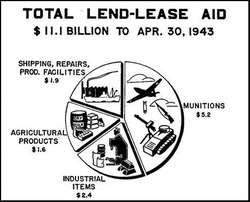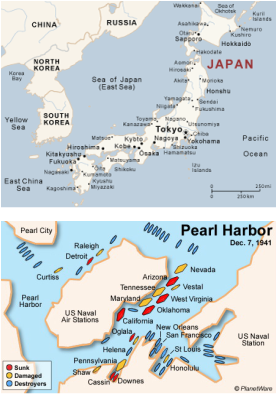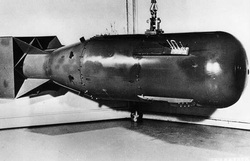WORLD WAR II
British Aid

America wanted Britain and France to win, but was committed to neutrality. In order to help Britain and France and keep neutrality at the same time, Franklin D. Roosevelt and Congress passed the Neutrality Act of 1939 which said the U.S. would sell war materials on a cash-and-carry.This was open to Germany too but the British and French navies could keep the Germans away. There was also the Destroyer Deal were Americans transferred 50 old destroyers from WWI days to Britain and in return, the U.S. got eight defensive bases. The Quarantine speech, Neutrality Acts, cash-and-carry,and Destroyer Deal showed that the U.S. was taking steps away from isolationism. But the abandonment of isolationism was fully clear until congress passed the Lend-Lease Bill were America had sent about $50 billion worth of arms and material to the Allies. Everyone even Hitler realized America was no longer neutral and on On May 21, 1941 a German submarine destroyed an American ship.
THE ATLANTIC CHATER
The Atlantic Charter was first issued in August 1941 and it stated the Allied goals for the post-WWII, the U.S went to the meeting even though they weren't in the war. The main points of the Charter were like Wilson's Fourteen Points of WWI : Self-determination meaning there would be no territorial or government changes without the people's vote, disarmament, a new peace-keeping organization, like the League of Nations. Isolationists criticized the Atlantic Conference and Charter, they felt that America was no longer neutral.



